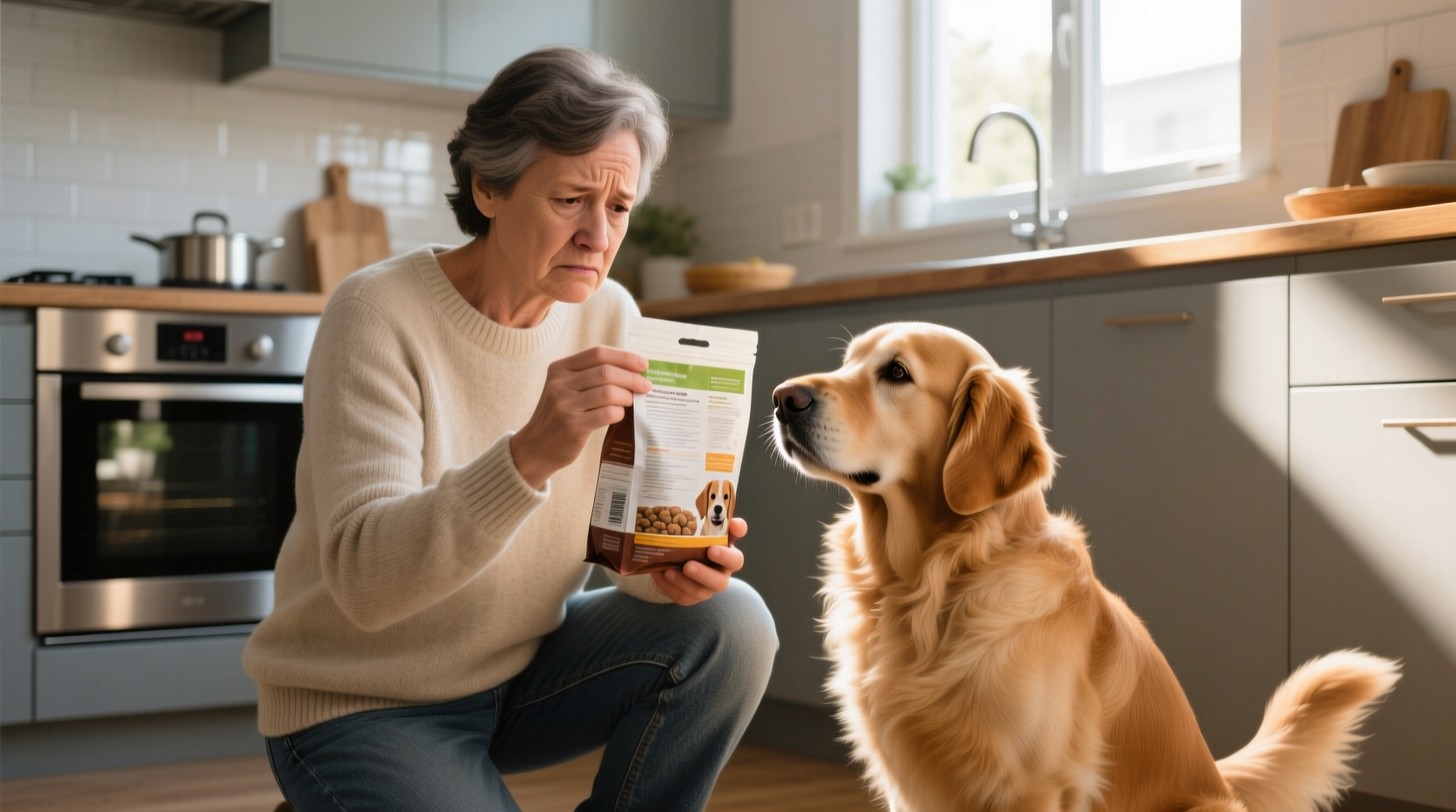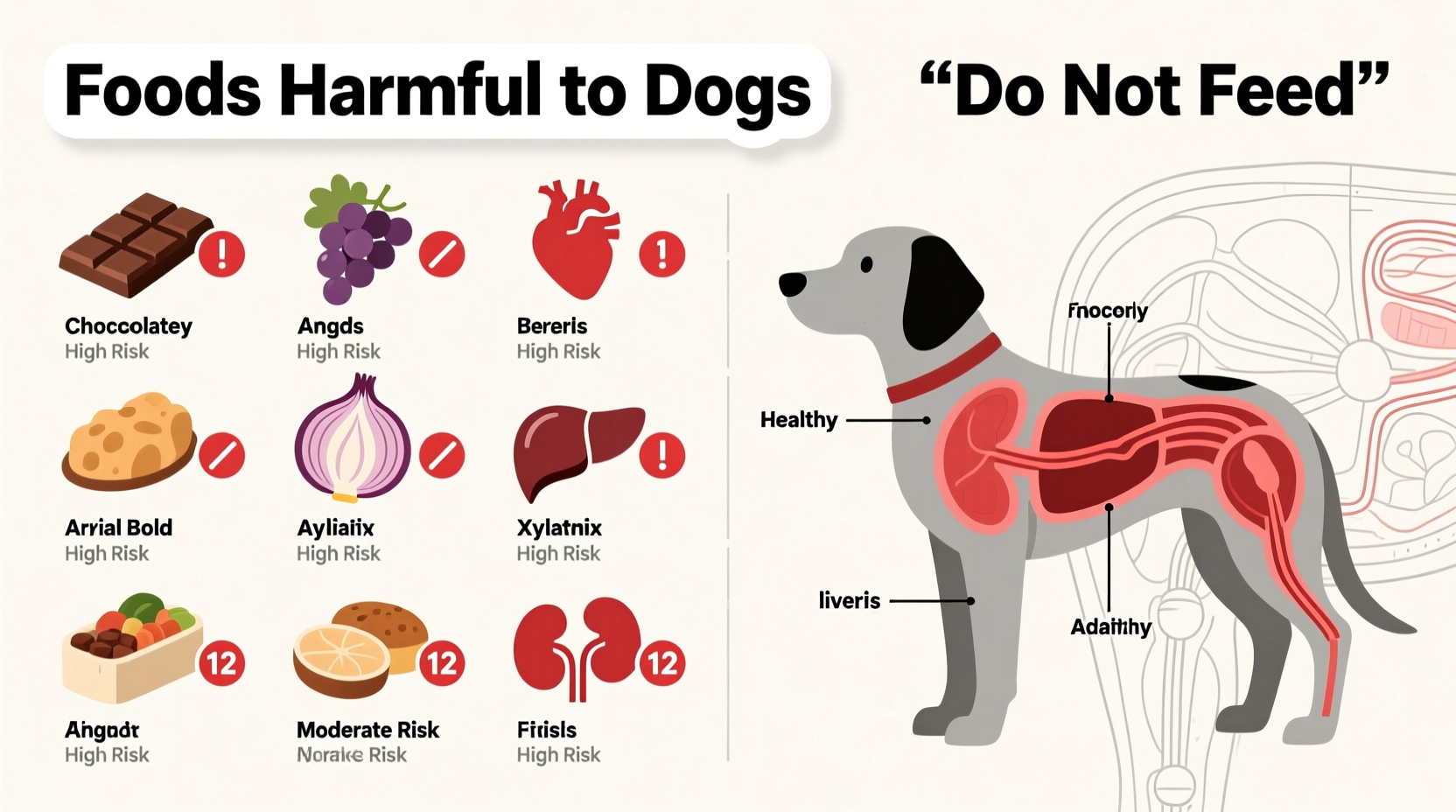Immediate action saves lives: If your dog consumed chocolate, xylitol, grapes, or onions within the last 2 hours, contact your veterinarian or the ASPCA Animal Poison Control Center (888-426-4435) immediately. Do not wait for symptoms. The most dangerous human foods for dogs include chocolate (theobromine), xylitol (artificial sweetener), grapes/raisins, onions/garlic, alcohol, and cooked bones. Never induce vomiting without professional guidance as it can worsen certain poisonings.
As a dog owner, knowing which human foods pose serious health risks to your canine companion isn't just helpful—it's potentially life-saving. Each year, thousands of dogs require emergency veterinary care after consuming common household foods that humans enjoy safely. Understanding these dangers allows you to create a safer home environment and respond appropriately if accidental ingestion occurs.
Most Critical Food Hazards for Dogs
While many human foods cause only mild digestive upset in dogs, certain items trigger severe, life-threatening reactions even in small quantities. These require immediate veterinary attention:
| Food | Toxic Component | Minimum Dangerous Amount | Primary Symptoms |
|---|---|---|---|
| Dark Chocolate | Theobromine | 1.5 oz per 10 lbs body weight | Vomiting, diarrhea, rapid breathing, seizures |
| Xylitol (sugar-free products) | Xylitol | 0.1 g per kg body weight | Weakness, collapse, liver failure |
| Grapes/Raisins | Unknown compound | 0.32 oz per kg body weight | Vomiting, kidney failure |
| Onions/Garlic | N-propyl disulfide | 0.5% of body weight | Weakness, pale gums, collapse |
Complete Guide to Dangerous Human Foods for Dogs
Severe Toxicity Foods (Require Immediate Veterinary Care)
Chocolate and Caffeine
Chocolate contains theobromine and caffeine, which dogs metabolize much slower than humans. Dark chocolate and baking chocolate contain higher concentrations than milk chocolate. According to the American Kennel Club, symptoms typically appear 6-12 hours after ingestion and include hyperactivity, tremors, and potentially fatal cardiac arrhythmias. Even small amounts of dark chocolate can be dangerous for small breeds.
Xylitol-Containing Products
Xylitol, found in sugar-free gum, candy, baked goods, and some peanut butter brands, causes rapid insulin release in dogs, leading to hypoglycemia within 10-60 minutes. The ASPCA Animal Poison Control Center reports that just one piece of sugar-free gum can contain enough xylitol to poison a small dog. Liver failure may develop 24-48 hours after ingestion, even if initial symptoms seem to resolve.
Grapes and Raisins
The exact toxic compound in grapes remains unidentified, but ingestion can cause acute kidney failure. The Cornell University College of Veterinary Medicine notes that toxicity occurs unpredictably—some dogs show no reaction while others develop kidney failure after consuming just a few grapes. Symptoms typically appear within 24 hours.
Moderate Risk Foods (Require Veterinary Consultation)
Onion Family (Onions, Garlic, Chives, Leeks)
These contain N-propyl disulfide, which damages red blood cells and causes hemolytic anemia. Toxicity depends on the dog's size and the amount consumed. Small amounts in baby food or cooked dishes might be tolerated, but concentrated sources like garlic powder pose significant risks. Symptoms may take several days to appear, making early intervention critical.
Alcohol and Raw Yeast Dough
Both produce ethanol in a dog's system. Raw bread dough continues to rise in the warm stomach environment, causing gastric dilatation-volvulus (bloat), while the fermenting process produces alcohol. The Pet Poison Helpline reports that even small amounts can cause neurological depression, respiratory distress, and metabolic acidosis.
Fatty Foods and Cooked Bones
High-fat human foods can trigger pancreatitis, especially in breeds like Miniature Schnauzers. Cooked bones splinter easily, causing internal injuries or blockages. While raw bones carry their own risks, cooked poultry or meat bones are particularly dangerous due to their brittle nature.
Context-Specific Risks (Depends on Quantity and Dog's Condition)
Certain foods present variable risks based on the dog's size, breed, age, and health status:
- Avocado: Contains persin, which affects birds more than mammals, but the large pit poses choking hazards
- Milk and Dairy: Many adult dogs are lactose intolerant, causing digestive upset but not toxicity
- Nuts: Macadamia nuts cause weakness and tremors; walnuts and pecans may contain mold toxins
- Fruit Pits and Seeds: Contain cyanide compounds and pose choking hazards
What to Do If Your Dog Eats Something Toxic
Time is critical when dealing with potential poisoning. Follow these evidence-based steps:
- Remain calm—your dog will pick up on your stress
- Identify the substance—collect packaging or remaining food
- Note the time and amount consumed if possible
- Call your veterinarian or animal poison control immediately
- Do NOT induce vomiting unless specifically instructed (can worsen certain poisonings)
- Transport your dog to the clinic while following professional guidance
The ASPCA Animal Poison Control Center (888-426-4435) operates 24/7 and charges a $65 consultation fee that may be covered by pet insurance. Keep this number saved in your phone for emergencies.

Preventing Food-Related Emergencies
Proactive measures significantly reduce risks:
- Store human food securely in cabinets dogs cannot access
- Train your dog the "leave it" command using positive reinforcement
- Use baby gates to restrict kitchen access during meal preparation
- Check ingredient labels on peanut butter and other dog treats for xylitol
- Establish a designated feeding area away from family dining spaces
- Inform all household members and visitors about dangerous foods
Remember that dogs' nutritional needs differ significantly from humans. While occasional safe human foods can be used as training treats, their primary nutrition should come from balanced commercial dog food formulated for their life stage and health condition.











 浙公网安备
33010002000092号
浙公网安备
33010002000092号 浙B2-20120091-4
浙B2-20120091-4